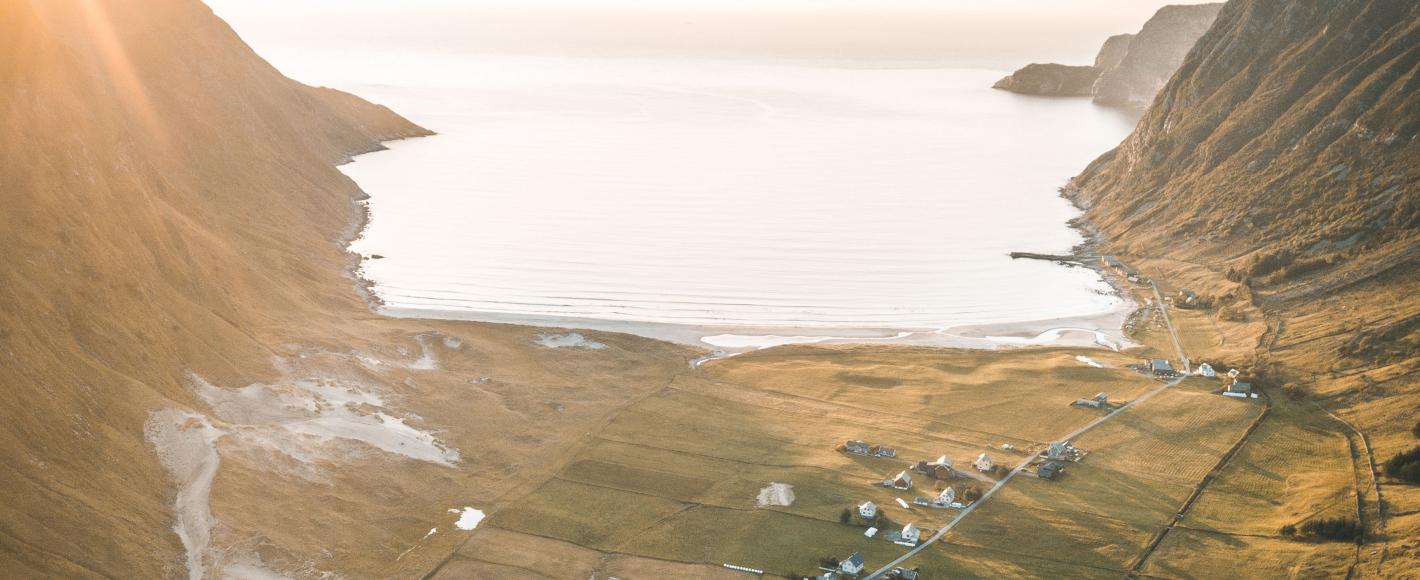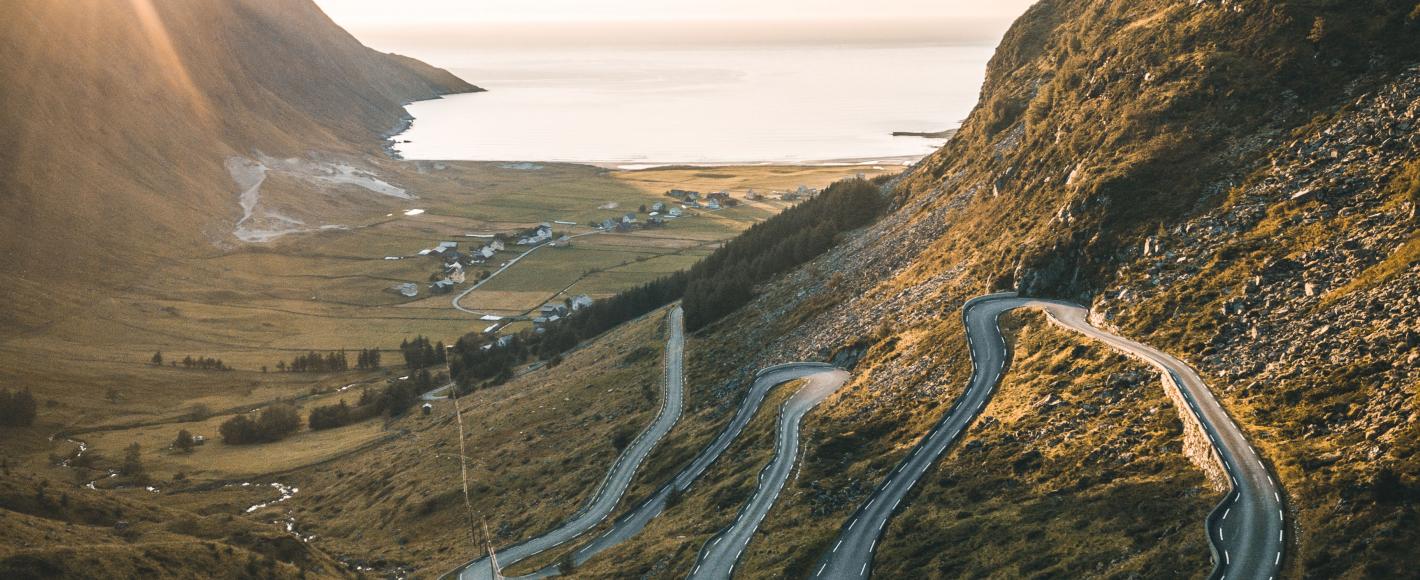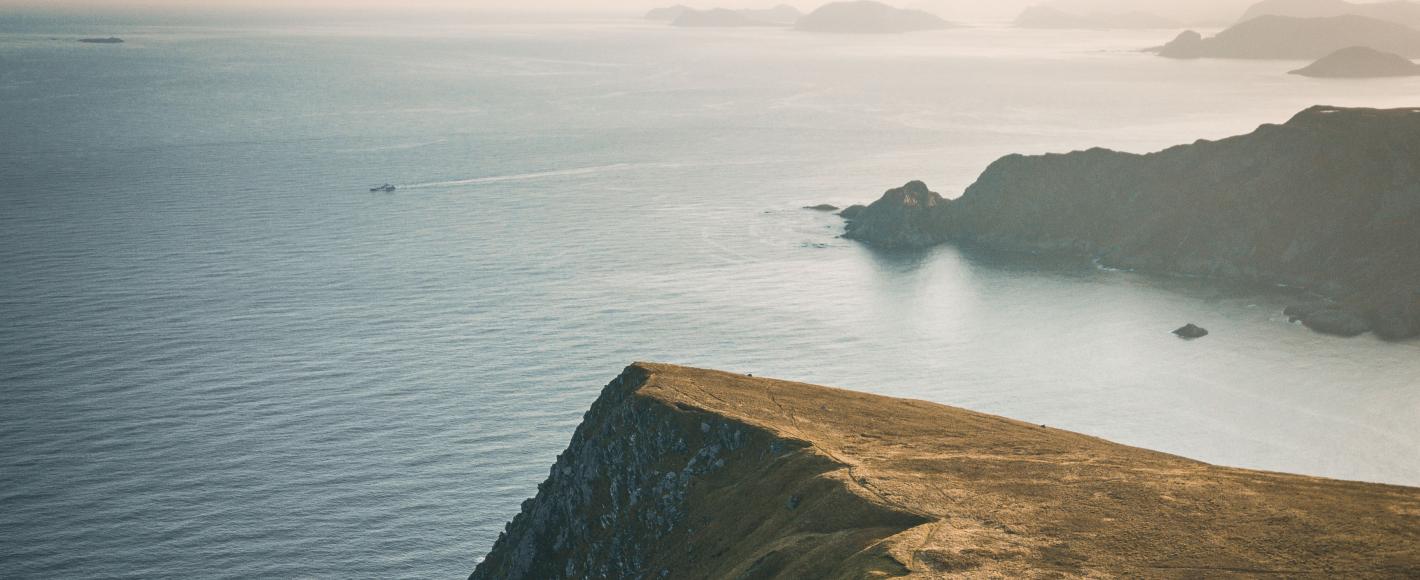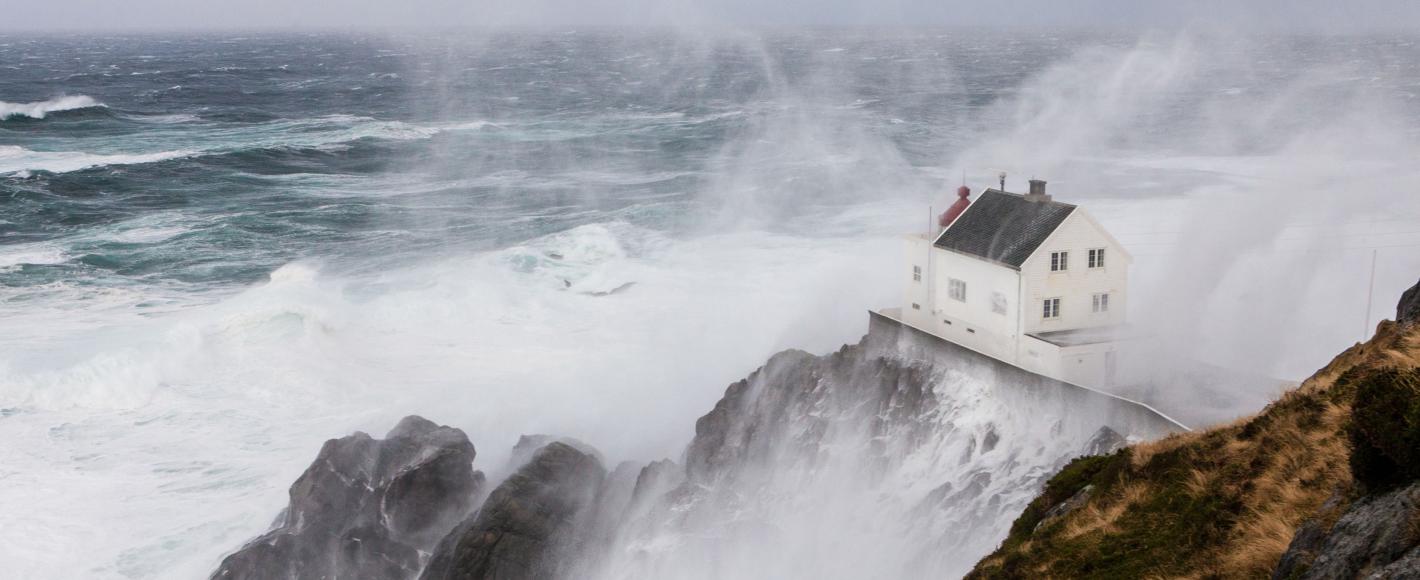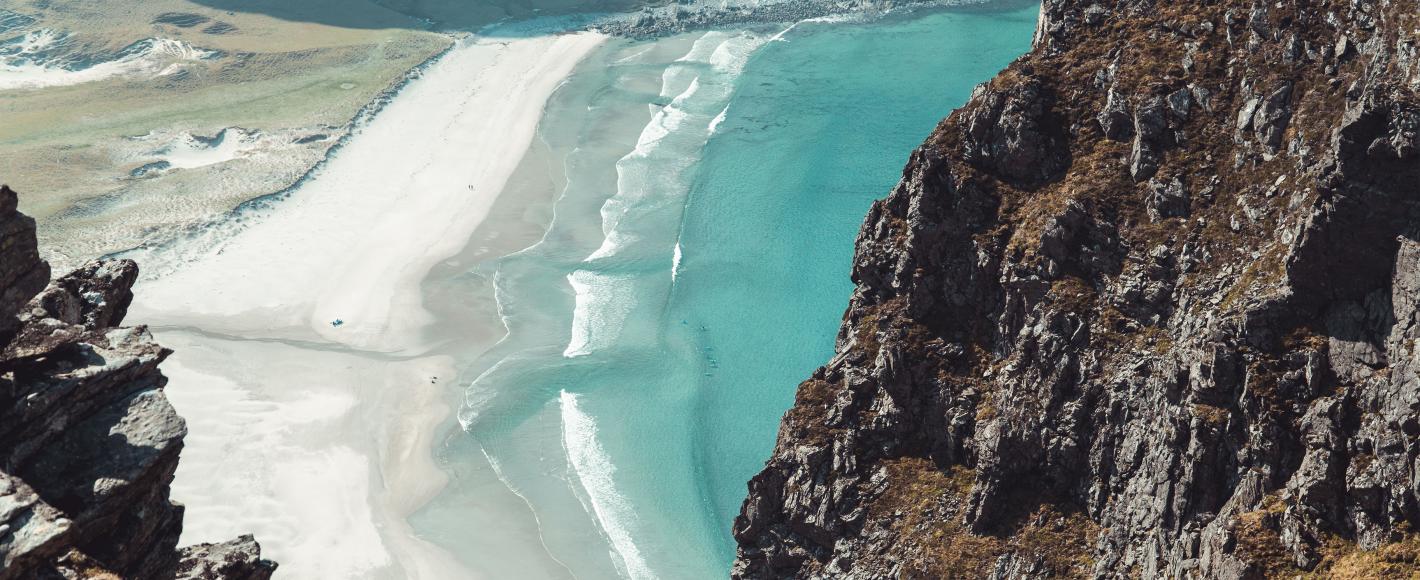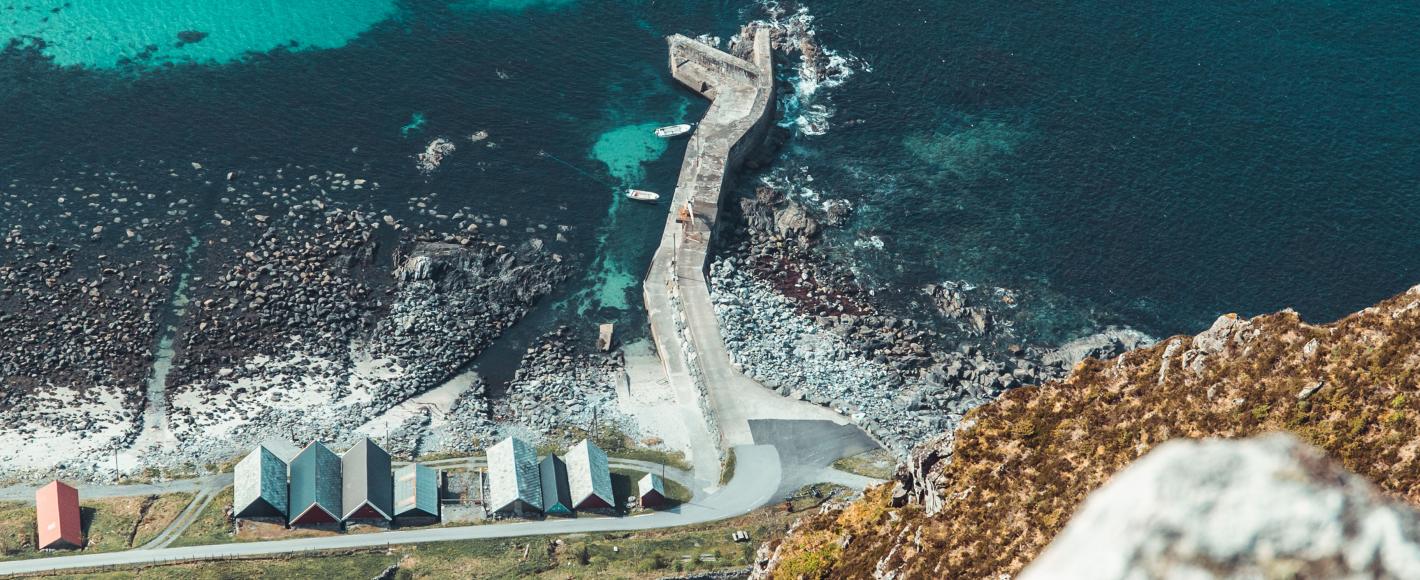Breathe out. Walk barefoot on white sandy beaches and surf the ocean waves that roll in from the west. Stay in a lighthouse during a storm, and get a sense of your own insignificance when the waves crash against its walls. Stand on the West Cape plateau and see the curve of the earth on the horizon, behind the formidable Stadhavet sea.
The coastline of Norway extends over 13 degrees of latitude and is a staggering 57,000 kilometres long. This illustrates the length and importance of the coast as a means of transport. Our coastal culture is truly unique, and the fishing communities have lots of great stories about storms, huge catches and love. In the outer reaches of Nordfjord, people’s lives have always been closely linked to the sea and fisheries. In line with this tradition and forward-looking businesses, the municipalities have developed a large, modern fishing fleet and a state-of-the-art export and fisheries industry.
Lighthouses
Those travelling along the coast not only had to rely on the services of pilots, they also had to be able to navigate by navigation aids, beacons and lighthouses. The building of hundreds of lighthouses along our exposed coastline, from Finnmark to the Swedish border, was one of the biggest and most impressive projects in Norwegian history. Four lighthouses were built in Nordfjord: Skongenes Lighthouse (1870), Ulvesund Lighthouse (1870), Kråkenes Lighthouse (1906) and Hendanes Lighthouse (1914).
Surfing
The conditions for surfing are perfect at Stad, with ocean waves and white sandy beaches framed perfectly by steep mountainsides. Maybe the word surfing sets you thinking about palm trees and tropical temperatures in southern climes. Surfing in the beautiful coastal landscape at Stad is at least as exotic. These fantastic beaches have long been hidden surfing gems, but more and more people have now discovered the joy of surfing out here at the ocean's edge. The kilometre-long sandy beach at Hoddevik is one of Norway's best and most beautiful surfing spots. Thirty kilometres away is Ervikstranda beach, where there are almost always waves. Be aware of undercurrents and the remains of shipwrecks in Ervik.
Diving
The Nordfjord coast is a paradise for diving enthusiasts. Countless boats have gone to a watery grave in the treacherous waters at Stad, but few have been found or explored by divers. Maybe you will be lucky and find a new wreck? There is rich vegetation with kelp forests, caves and interesting rock formations. There are also lots of fish and shellfish in the area.
Other activities
In addition to the activities above, it is also possible to hire a boat from most of the accommodation providers along the coast. You can go fishing, sign up for a RIB boat trip, go out in a boat or take a dip in the sea at one of the fantastic white sandy beaches along the coast of Nordfjord. Bring a bucket and spade and check out the lovely beaches in Selje: Seljesanden, Ervik, Hoddevik or Refviksanden in Vågsøy.
Fisheries
In the 1800s, the spring herring fisheries were a mainstay in the economy of Nordfjord and the rest of the region. In 1868, almost 3,000 locals took part in the spring herring fisheries. Around 900 of them came from Selje and Vågsøy, which were then one municipality. Although the cod fisheries could also be lucrative, herring was the most important fish for the people of Nordfjord and the rest of Sogn og Fjordane. People who lived in the communities along the coast liked to fish locally. People who came to work in the fisheries stayed in the typical fishing stations. The biggest of these stations was Torskangerpoll in Vågsøy, which was only second to Borgundsund in Sunnmøre. From the mid-1800s, Kalvåg also emerged as one of the most important fishing stations in Western Norway.
The Hanseatic merchants and maritime trade
From the 1300s until the mid-1500s, Hanseatic merchants dominated trade between northeast and northwest Europe, shipping raw materials and food supplies to the west in return for western products. The west bought goods such as furs, wax, grain, fish, linen, hemp, timber and timber products, tar and potatoes. In return, the Hanseatic merchants brought industrial, finished products such as fabrics, metal items, weapons and spices.
There is some debate about when the Hanseatic period in Bergen actually began, but what we know for certain is that Bergen started trading with Germany as early as in the 12th century. In Germany, the Hanseatic period is generally considered to be from the 1200s to the 1500s.
Bergen was not, strictly speaking, a Hanseatic city, but it was the seat of one of the four trading posts, alongside Bruges, London and Novgorod. However, the Hanseatic period lasted longer in Bergen than in the rest of Europe, where trade mainly consisted of exchanging grain for salt fish, because Norway had more fish than it needed. When the Hanseatic trading office closed in Bergen in 1754, a Norwegian trading office took over, which was founded by Norwegian, albeit ethnic German, merchants. It lasted until 1899 when it was wound up. The fish trade was transferred to Bontlebo 50 years later, as the old buildings at Bryggen were no longer considered suitable for the most important fish market in Bergen.
‘Holvikejekta’ boats and trade with Bergen
The boats were used to transport goods along the entire coast of Norway, from Hardanger in the south to Finnmark in the north. Bergen was generally the final destination for most of this traffic. The coastal communities had fish to sell and the fjord communities had wood. The Holvikejekta boat probably replaced the Viking ‘knarr’, which was a trading and transport vessel. It was the last of the traditional ‘jekt’ transport vessels, which sailed the fjords and the Norwegian coast from the Middle Ages up until the last century. They were used to transport wood and timber to Bergen, and could carry 120 cords of wood. If the wood had been split the previous year, it was lighter and a boat could carry 150 cords of wood. In addition to cord wood, the boats could also carry materials such as barrel hoops, bast rope, birchbark, barrels and chests, woven fabric and other homemade products to sell in the city. Children gathered pine cones to sell or tinder for lighting fires. These boats also transported smaller ‘færing’ boats and mast poles. They also transported livestock to Bergen from time to time, and would clear an area for them among the wood. This type of cargo was always ordered for delivery, while the wood was sold in the city in large or small quantities. At 20 metres, the Holvikejekta boat is the biggest preserved clinker-built boat in Norway and unique in an international context. It is one of the most valuable features of Norway’s maritime cultural heritage. You can see a Holvikejekta boat for yourself at Sandane in Gloppen municipality.
Safety at sea
You must always bear safety in mind when you are at sea. Respect the sea and weather, and wear a life jacket or other approved flotation device. Make sure you are well-rested, sober and show due consideration, and remember that the environment, safety at sea and your enjoyment of it are everyone’s responsibility.
Safety-at-sea rules: https://www.visitnorway.no/planlegg-reisen/sikkerhetstips/sikkerhet-pa-…
RELEVANT PRODUCTS


